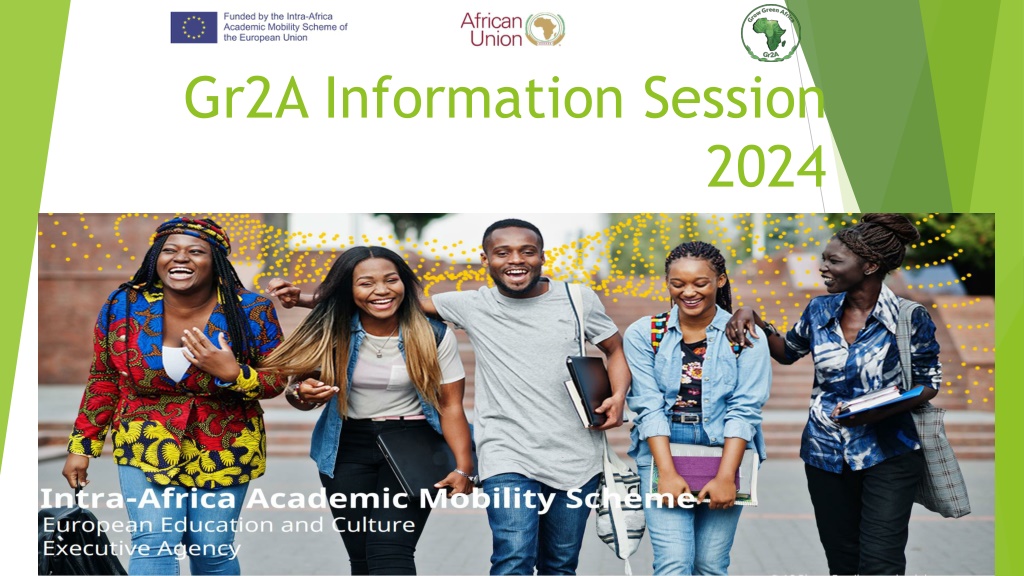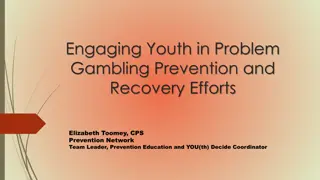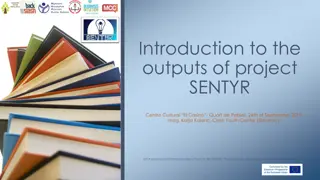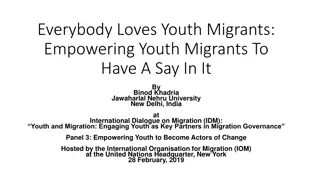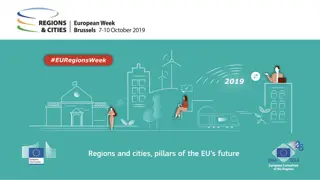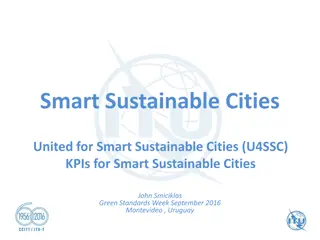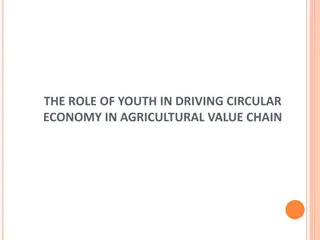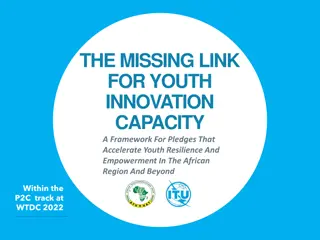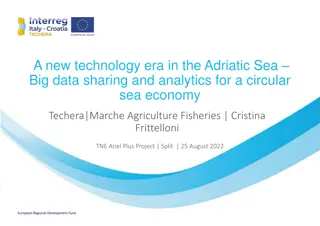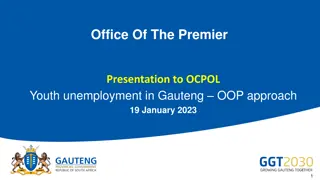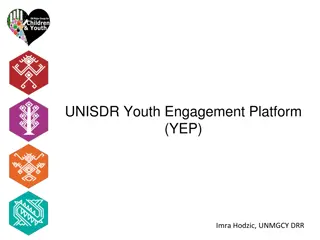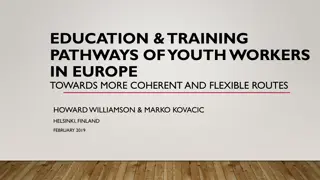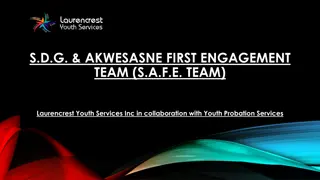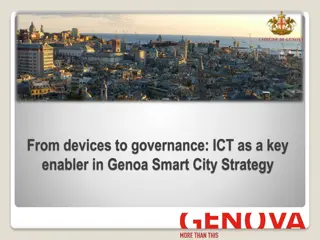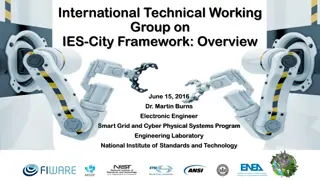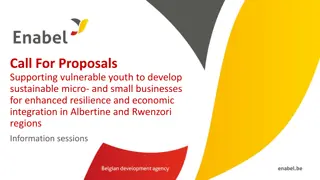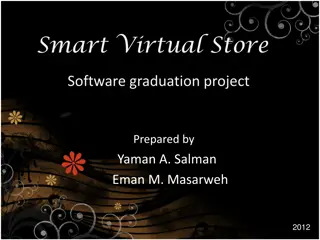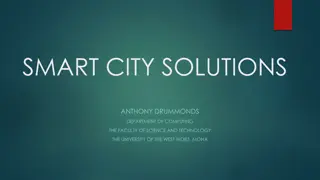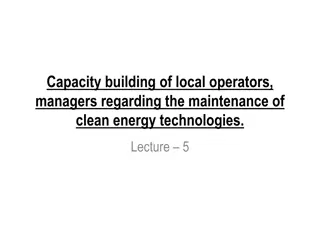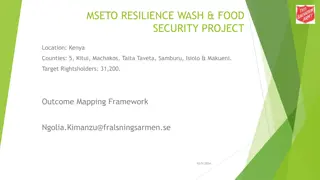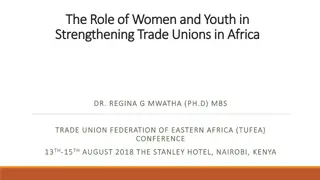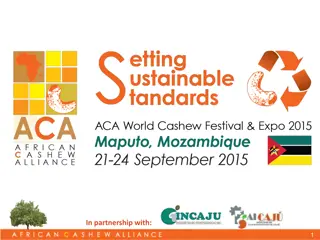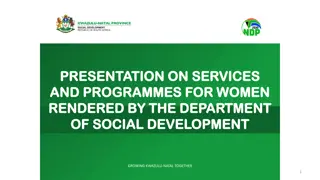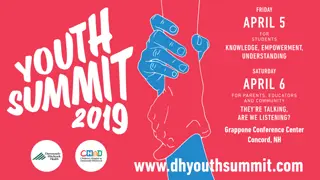Empowering African Youth Through Smart and Sustainable Technologies: The Gr2A Project Overview
"The Gr2A project, part of the Intra-Africa Mobility Scheme, aims to enhance inclusive learning mobility opportunities within and between Africa and the EU. By fostering collaboration, skills development, and policy dialogue, it supports continental integration, empowers African youth for employability, and strengthens higher education institutions. The project consortium, comprising six universities, focuses on the development of sustainable technologies across various disciplines. Through the promotion of green computing and innovative curricula, Gr2A seeks to contribute to the economic, social, and environmental sustainability of the region."
Download Presentation

Please find below an Image/Link to download the presentation.
The content on the website is provided AS IS for your information and personal use only. It may not be sold, licensed, or shared on other websites without obtaining consent from the author. Download presentation by click this link. If you encounter any issues during the download, it is possible that the publisher has removed the file from their server.
E N D
Presentation Transcript
Presentation Outline INTRA-AFRICA ACADEMIC MOBILITY SCHEME Gr2A Project Objectives Application Process Funding mechanism Evaluation Criteria
Intra-Africa Mobility Scheme Part of the Youth Mobility for Africa flagship initiative Global Gateway Africa-Europe Investment Package Provides learning mobility opportunities in Africa Supports both students and staff Promotes economic, social and human development for Africa
Intra-Africa Mobility Scheme Objectives Derived from Youth Mobility for Africa Increase inclusive and demand-driven learning mobility opportunities, skills development, and collaboration within Africa and between Africa and the EU, through exchanges, scholarships, and cooperation projects Strengthen continental integration by supporting regional and continental harmonization mechanisms in education Foster quality, relevance and attractiveness of African higher education institutions as destinations of choice Support the empowerment of African youth for sustainable employability and active citizenship Increase policy dialogue, coordination and valorization of cooperation between African and European partners
The Grow Green Africa (Gr2A) Project A Consortium of 6 universities 5 African universities: Copperbelt University - Zambia, I. II. Namibia University of Science and Technology - Namibia III. National University of Science and Technology - Zimbabwe IV. Rhodes University - South Africa V. University of Swaziland Eswatini 1 European university: I. University of Turku - Finland
Gr2A Focus Development of Smart and Sustainable Technologies Sustainability - the ability to maintain or support a process continuously over time Sustainability can be viewed across 5 dimensions: environmental, economic, individual, social, and technical (Peters et al. 2024) Green computing (Green ICT/Green IT/ICT sustainability) : - study and practice of environmentally sustainable computing or IT (Saha 2014) Gr2A Curriculum: Master s PhD Institution (s) Big Data Big Data NUST, Zimbabwe Computer Science Computer Science CBU, Rhodes, UNESWA Information Systems Information Systems NUST, Namibia; NUST, Zimbabwe; Rhodes Management Management NUST Namibia GIS GIS UNESWA
Gr2A Objectives To: Design a unique climate change-related curriculum in computing. Create teams of Masters and PhD scholars to tackle certain research areas in climate-smart technologies. Use AI to advance hydrological models and projections under climate change Use smart technologies to predict trends in vegetation Train students in PhD and Masters research on predictive analytics. Identify industries to support internships for scholarship, and define learning guidelines for the internship period. Work with communities to create climate-smart solutions that meet their needs
Gr2A Objectives ctd Human Capital Development in Computing Train 10 PhDs Train 35 Master s students Support 8 trainees
Gr2A Thematic Areas Institution CBU, Zambia Thematic Area Smart & Green Technologies in Mining Climate modelling, & weather prediction Smart and Green IS in Agriculture Renewable Energy, ICT4D Water resources modelling NUST, Namibia NUST, Zimbabwe Rhodes University, South Africa UNESWA, ESwatini
Target Groups The current call targets MSc and PhD scholars STUDENTS (at Master and Doctorate): national of and resident in an African country graduated/registered/admitted at one of the African HEIs member of the consortium (TG1) CBU NUST Namibia NUST Zimbabwe Rhodes University UNESWA or any other African HEIs (TG2) English speaking environment
Contact Persons Institution Copperbelt University (Zambia) Contact Person Dr George Mufungulwa mufungulwa@cbu.ac.zm Dr Nikodemus Angula nangula@nust.na chcangula@gmail.com Dr Sibonile Moyo sibonile.moyo@nust.ac.zw Prof. Nomusa Dlodlo n.dlodlo@ru.ac.za Namibia University of Science & Technology, Namibia National University of Science & Technology Rhodes University, South Africa University of Eswatini Dr Z.P. Ncube zenzopn@gmail.com zpncube@uniswa.sz
Eligible Mobility (Student Exchange) Only HEIs in the Gr2A Consortium can host mobility of students and staff (TG1) Mobility is eligible if carried out in an African country different from the country of nationality and residence of the scholarship holder Only organisations (public or private) established in the countries of the applicants (beneficiaries) HEIs from Africa can host trainees Student mobility of two types): credit-seeking mobility (leading to the academic recognition by the home HEI of the study/research period spent at the host HEI ) degree-seeking mobility (for a complete academic programme/leading to a degree) Mobility Duration (Determined in the call) Master students 4 to 24 months Doctoral candidates 6 to 36 months
Financial Support Stipend (accommodation and living expenses) Master s students (per month of mobility) 890 PhD students (per month of mobility) 1.230 In addition Full fees cover Insurance cover Visa fees Return ticket to and from the host institution Research support
Application Process Identify your target group (TG1 or TG2) I. Check whether there are institutions that offer your degree of choice II. III. Visit your institution (online) of choice and identify a tentative supervisor IV. Submit an application after liaising with your supervisor With an offer letter from your institution apply to Gr2A for funding V. VI. Download the Application form VII. Fill in all requirements VIII. Submit the form together with all the certificates and support documents
Application requirements Criteria/ Application checklist Host institution offer letter Motivation letter Concept Note Interview Score Academic Transcripts Academic certificates Experience in sustainability Contact with/ Availability of supervisor Proof od English Proficiency Favourable References Ability to obtain a visa
Student Selection During the selection process: Students are ranked according to performance Each institution fills its available posts using first choices and highest performers If posts are still available second choices are considered Any high-performing students not selected are placed on the waiting list according to rankings Students receive notice of the outcome once the selection process is over
Successful Candidates All successful applicants will be notified of the outcome of their application via email. Candidates will be given time to accept the offer before it is given to those on the waiting list For the selected candidates the notification will include: Instructions for further steps (visa guidelines, etc.) A model of the student agreement As well as any other relevant information All applicants who are not selected will be notified immediately after the selection decision has been made. Notification will include: The results of the selection The procedure to follow for an appeal to the selection decision
Student Support Each institution will provide academic support to students through structures set up for the purpose Each student will sign a learning agreement Students will receive social support to enable them to settle in Each student will be assigned a mentor Institutional and Consortium seminars will be arranged to guide students on their research journeys Collaborative research among students will be organized Students will have an opportunity to go for field trips Each institution will define course credits for short-term mobility to facilitate recognition of studies
References Fizek, S. et al.(2023) Teaching Environmentally Conscious Game Design: Lessons and Challenges , Games: Research and Practice, 1(1), pp. 1 9. doi:10.1145/3583058. Henderson, P. et al.(2020) Towards the systematic reporting of the energy and carbon footprints of machine learning , Journal of Machine Learning Research, 21, pp. 1 43. Pazowski, P. (2015) GREEN COMPUTING : LATEST PRACTICES AND TECHNOLOGIES FOR ICT SUSTAINABILITY COMPUTING APPROACHES , in Managing Intellectual Capital and Innovation for Sustainable and Inclusive Society. Bari, Italy, pp. 1853 1860. Peters, A.K. et al.(2024) Sustainability in Computing Education: A Systematic Literature Review , ACM Transactions on Computing Education, 24(1). doi:10.1145/3639060.
